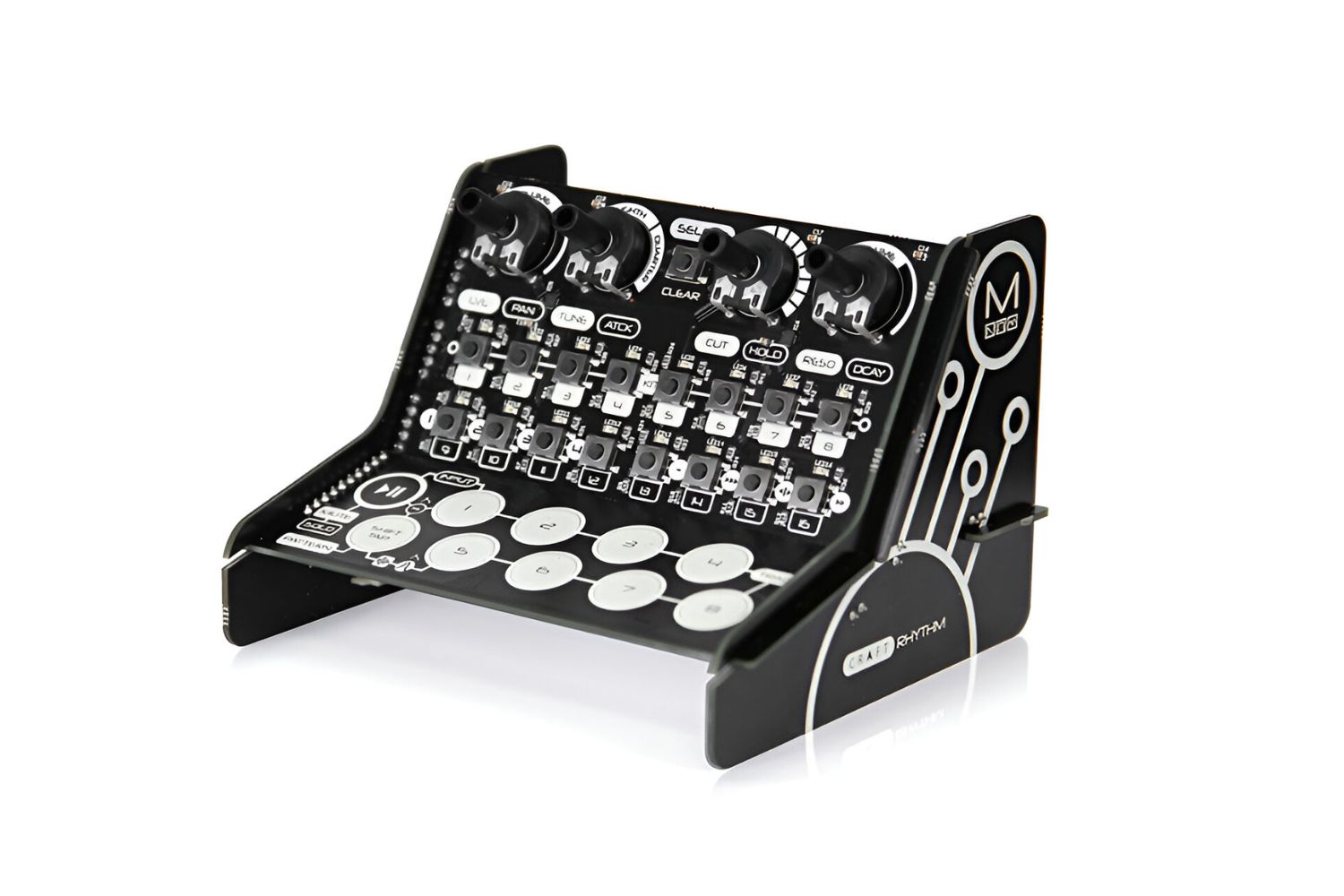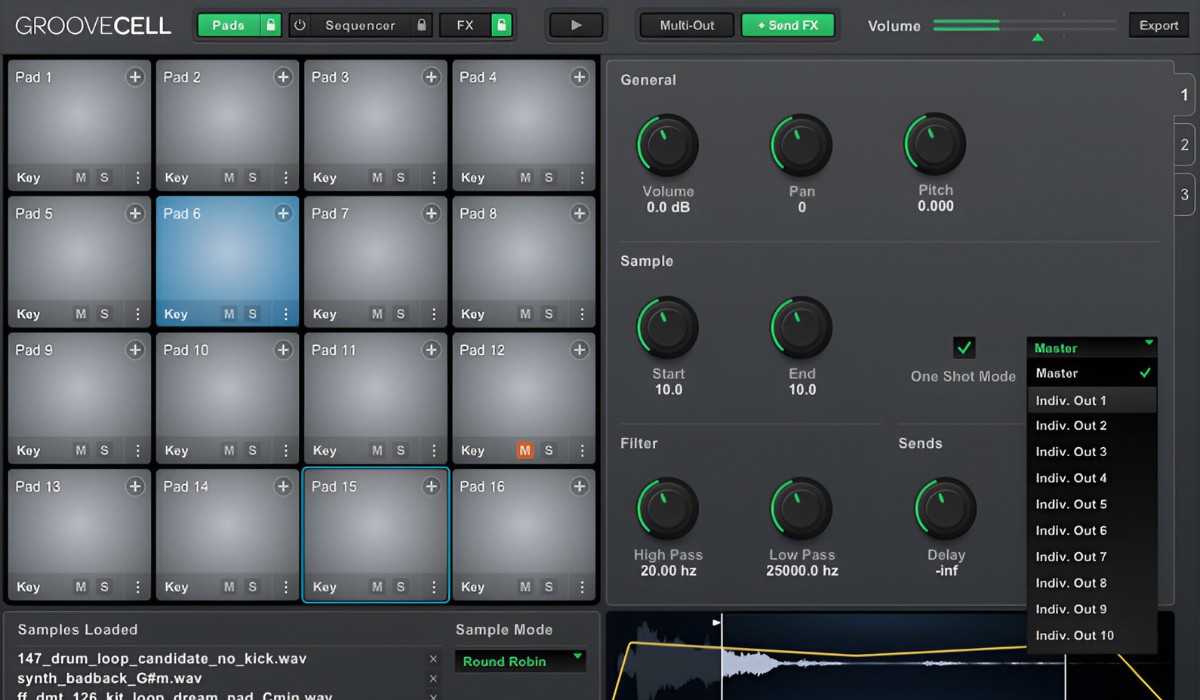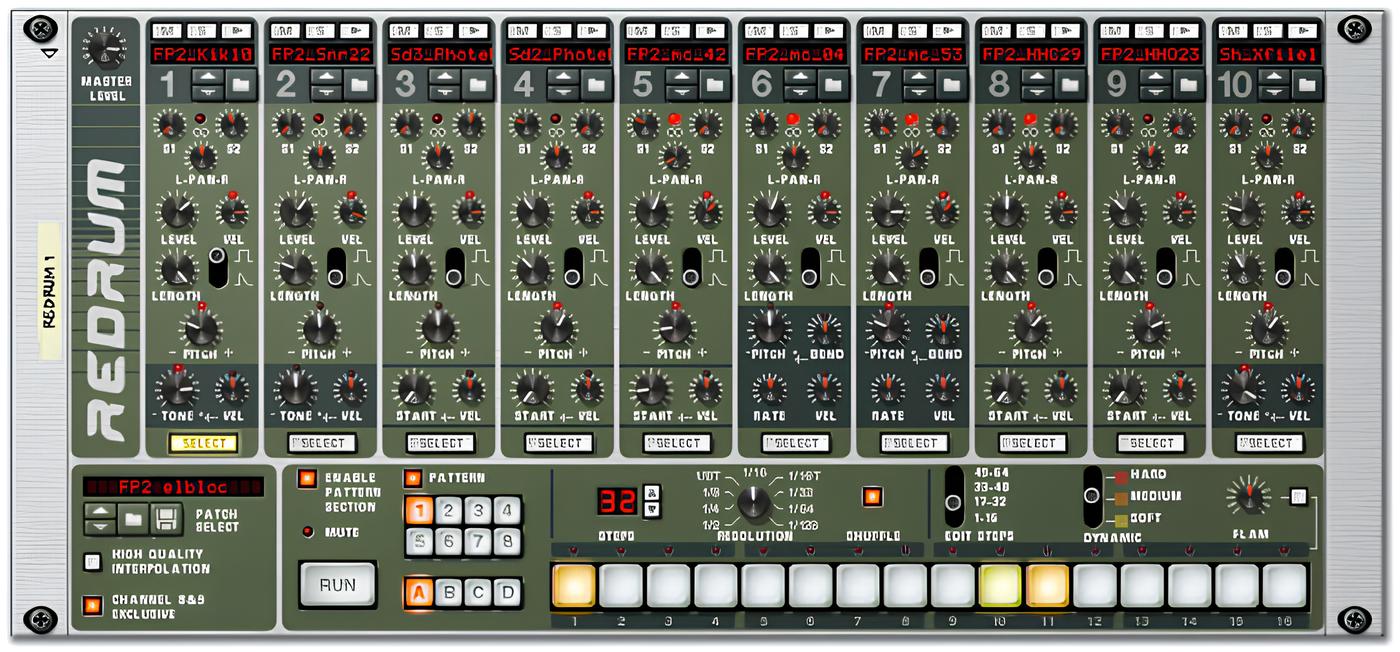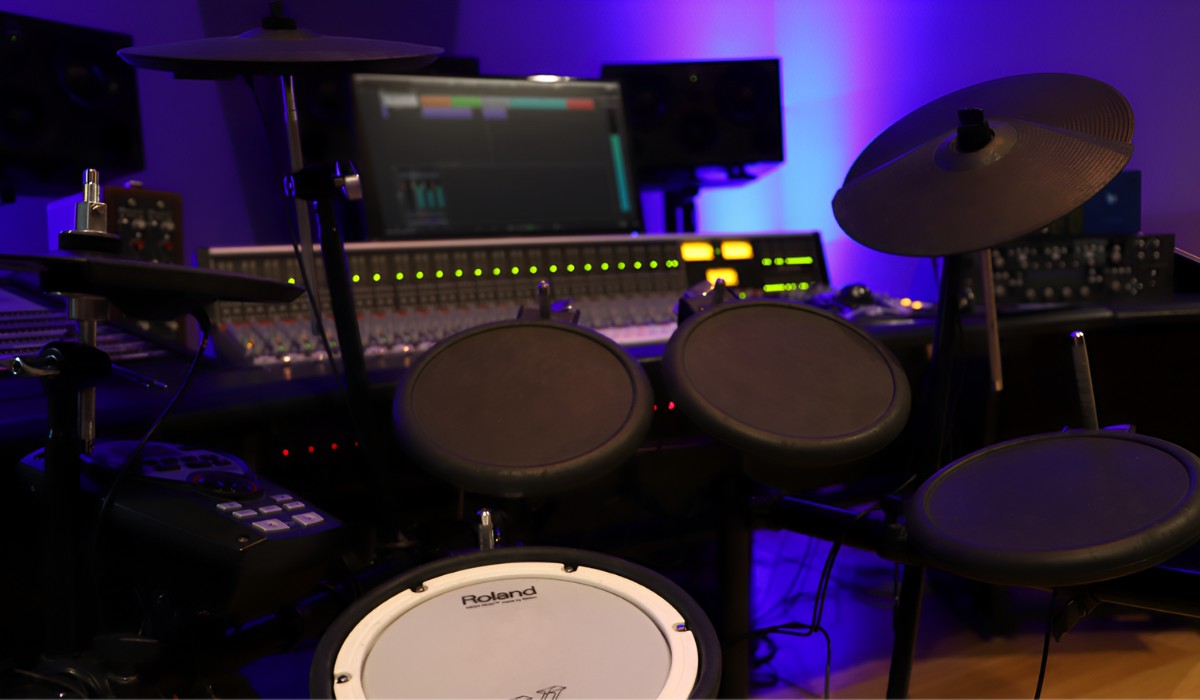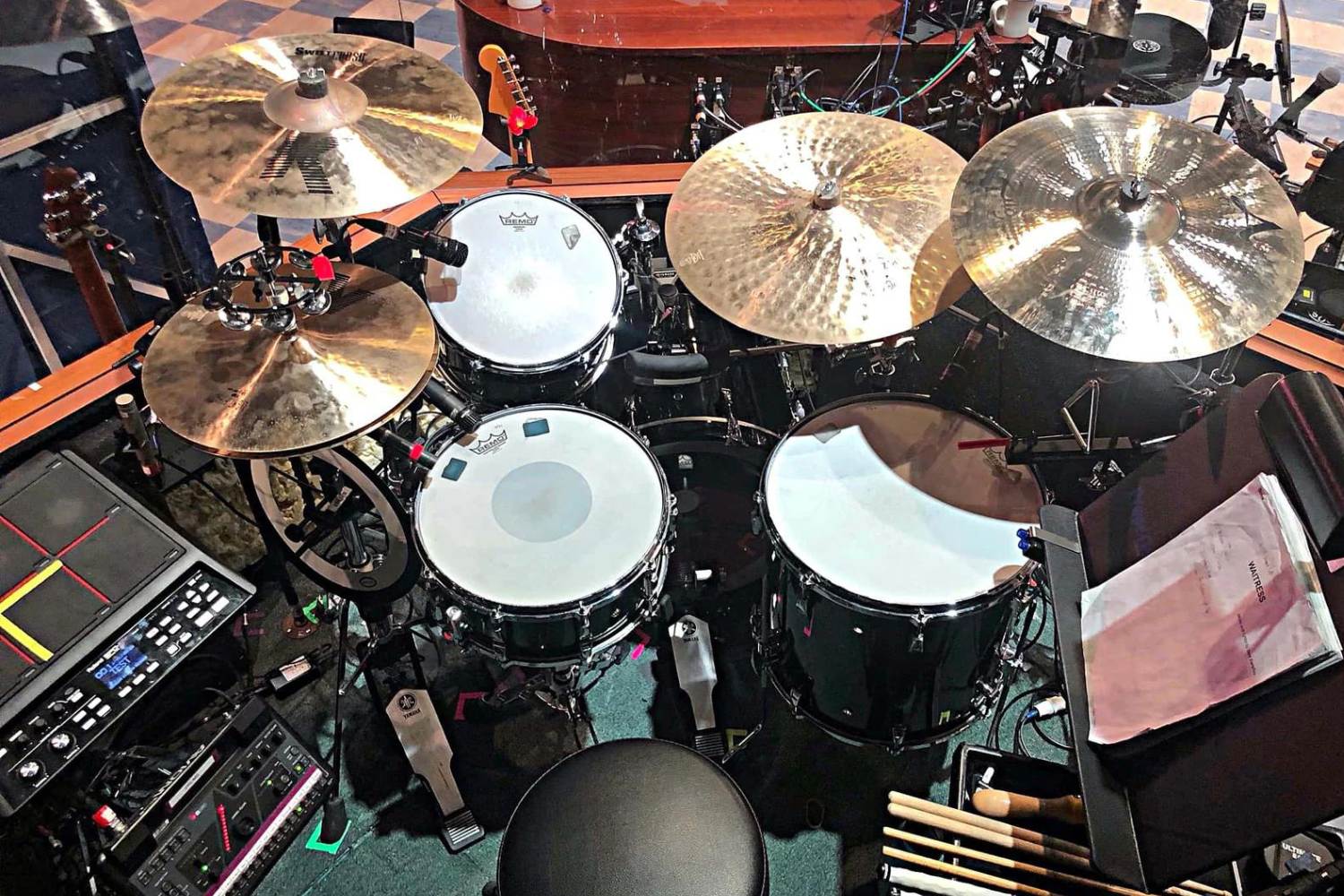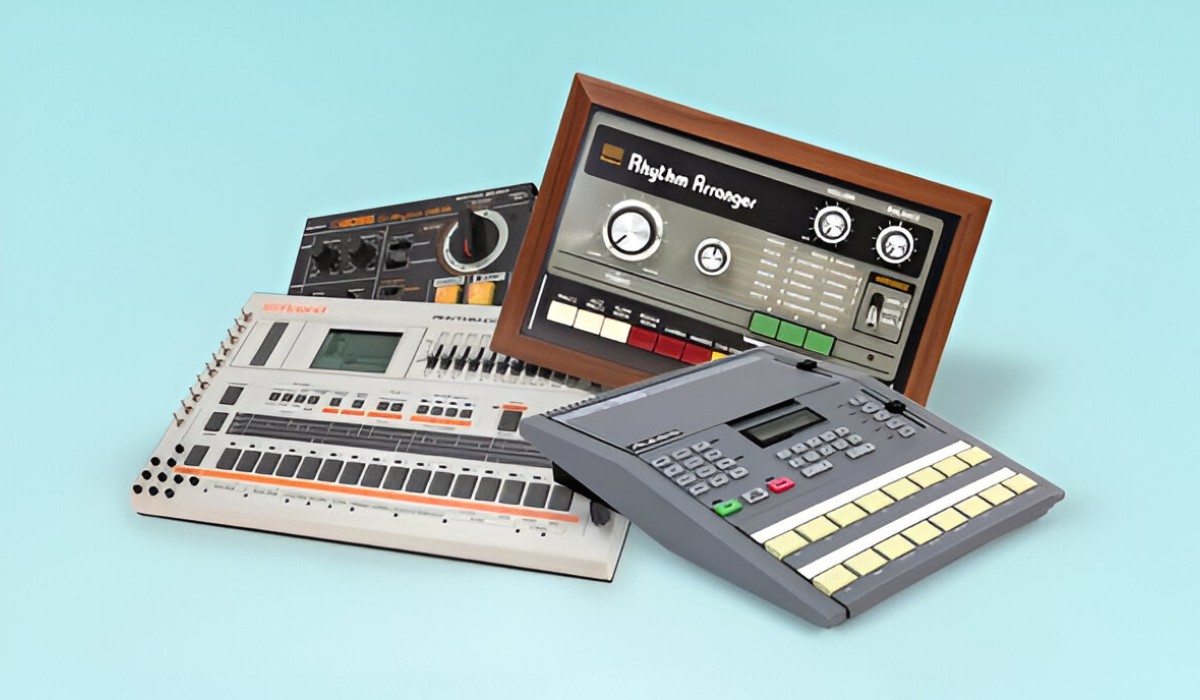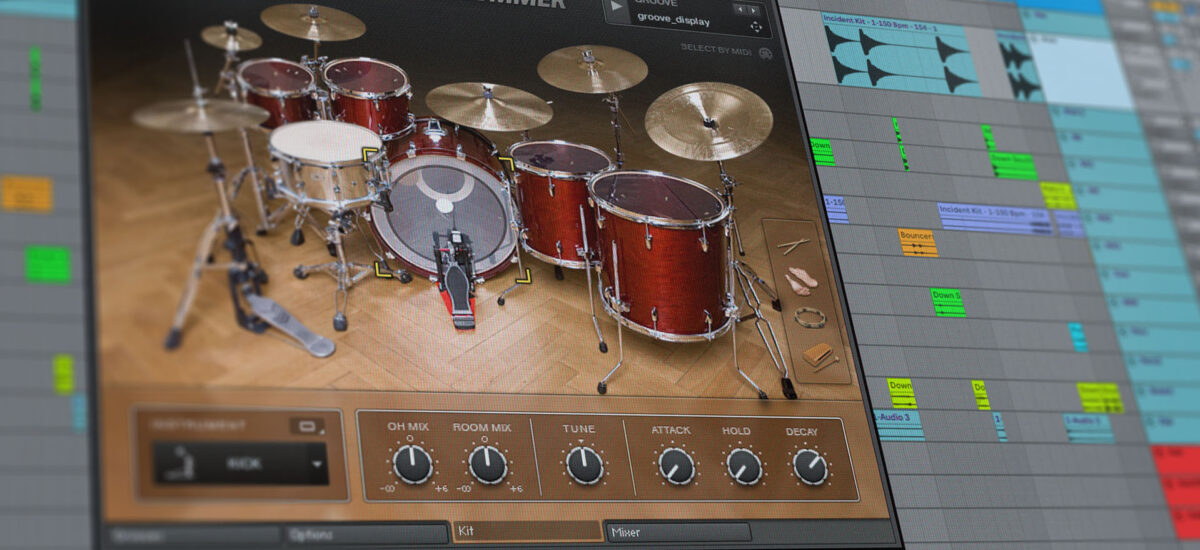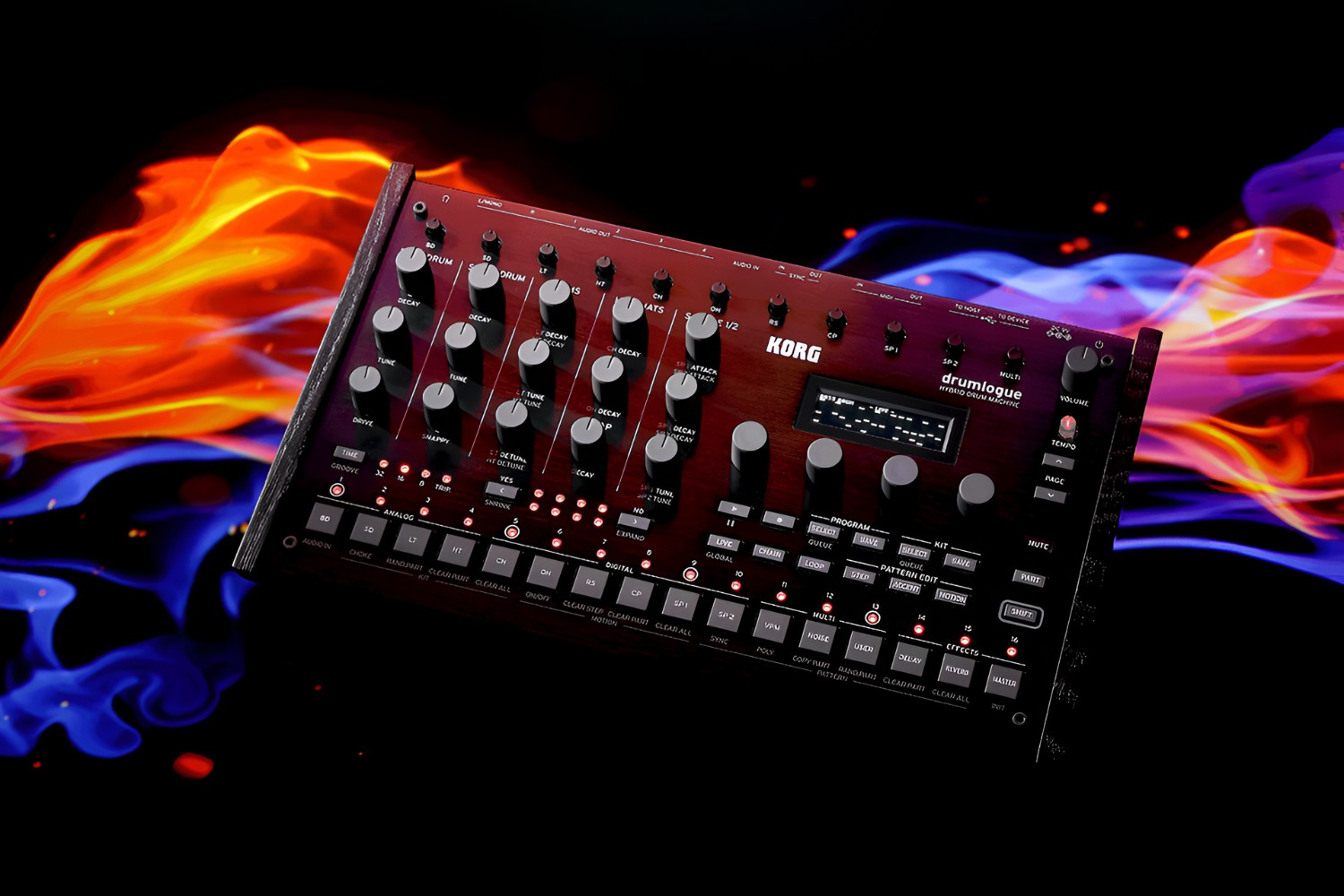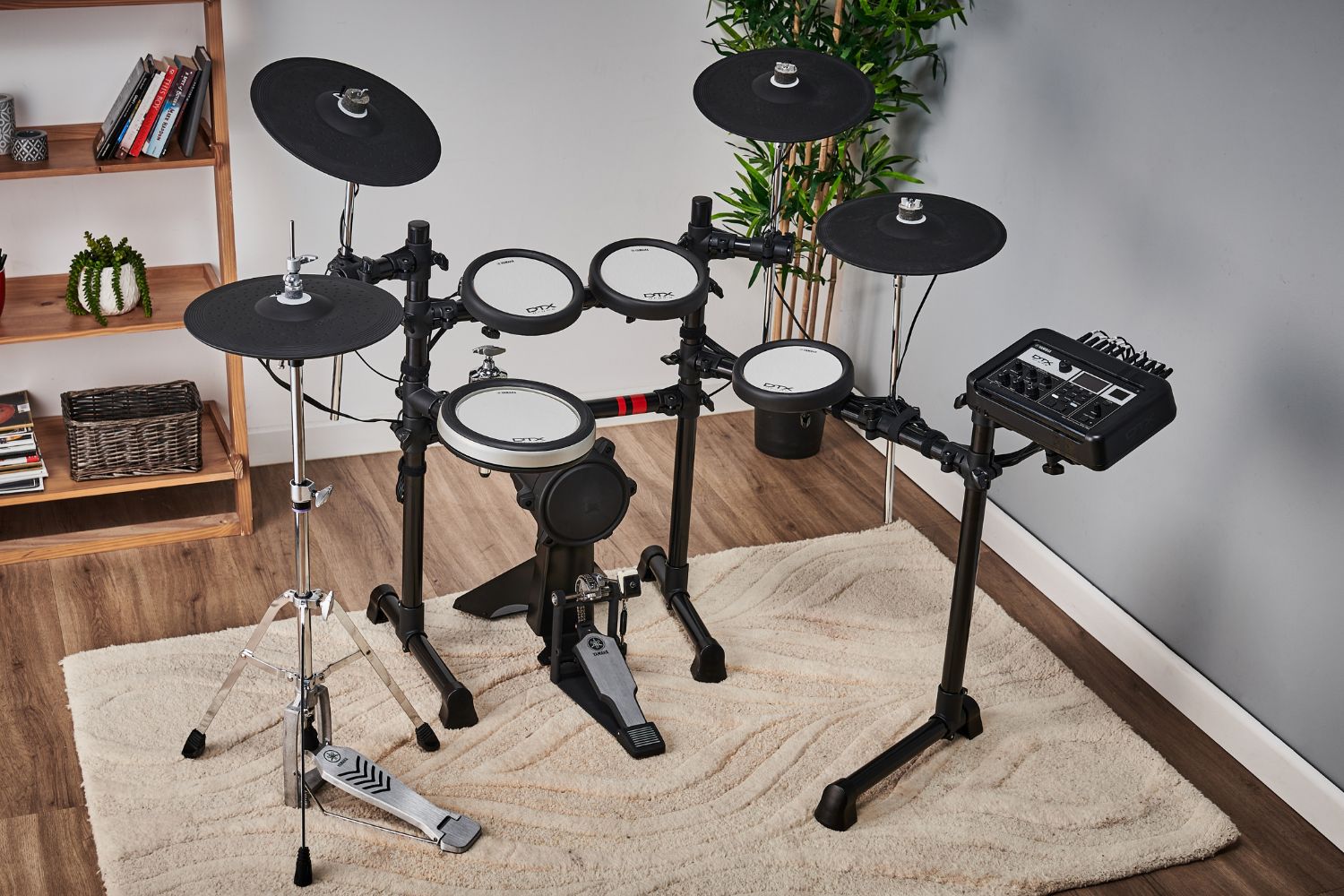Introduction
Welcome to the exciting world of creating your very own drum machine! Whether you're a music enthusiast, a hobbyist, or a seasoned musician, building a drum machine from scratch can be a rewarding and enriching experience. In this comprehensive guide, we will delve into the intricate process of crafting a fully functional drum machine, complete with customizable drum sounds, a user-friendly interface, and seamless sequencing capabilities.
Building a drum machine from the ground up allows you to exercise your creativity, technical skills, and musical intuition. By embarking on this journey, you'll gain a deeper understanding of how electronic music instruments operate and the meticulous design considerations that contribute to their functionality.
Throughout this guide, we'll explore the essential steps involved in creating a drum machine, including selecting and setting up the hardware, programming unique drum sounds, designing an intuitive user interface, implementing sequencing and timing features, and conducting thorough testing to ensure optimal performance.
Whether you're passionate about electronic music production, seeking to expand your DIY electronics repertoire, or simply eager to embark on a hands-on, educational project, the process of making a drum machine is both fulfilling and enlightening. So, roll up your sleeves, unleash your creativity, and get ready to embark on an exhilarating journey into the realm of music technology. Let's dive into the fascinating world of crafting your very own drum machine!
Getting Started with the Hardware
Before delving into the nitty-gritty of programming and design, the first crucial step in creating a drum machine is acquiring the necessary hardware components. The heart of the drum machine lies in the microcontroller, which serves as the brain that processes and executes the programmed drum sounds and sequencing commands. Arduino, Raspberry Pi, or similar microcontrollers are popular choices due to their versatility and ample support within the maker community.
Additionally, you’ll need to source tactile buttons or pads for triggering drum sounds, potentiometers for adjusting parameters such as volume and tempo, an LCD or LED display for visual feedback, and audio output components such as a digital-to-analog converter (DAC) for producing high-quality sound. Ensuring compatibility and seamless integration among these hardware elements is paramount to the overall functionality and user experience of the drum machine.
Assembling the hardware entails meticulous attention to detail, including soldering connections, wiring components to the microcontroller, and integrating power and audio circuits. This phase demands precision and a methodical approach to guarantee the reliability and longevity of the drum machine.
Furthermore, the choice of enclosure or casing for the drum machine is pivotal, as it not only houses the internal components but also influences the device’s aesthetics and ergonomics. Whether opting for a sleek, compact design or a retro-inspired, rugged enclosure, the housing should complement the functionality and resonate with the intended user base.
Once the hardware components are in place, it’s essential to conduct thorough testing to validate the functionality and address any potential issues. This iterative process of refining the hardware setup sets the stage for the subsequent phases of programming, interface design, and sequencing implementation. With the hardware foundation solidified, the journey of crafting a personalized drum machine gains momentum, paving the way for the captivating realms of sound design and user interaction.
Programming the Drum Sounds
Once the hardware foundation is established, the next pivotal phase in creating a drum machine is programming the distinctive drum sounds that form the core of its sonic identity. This process involves crafting and integrating digital sound samples or synthesizing waveforms to emulate a diverse array of percussive instruments, including kicks, snares, hi-hats, cymbals, and various percussion elements.
Utilizing a combination of sample-based and synthesis techniques, you can infuse each drum sound with character, depth, and expressiveness. Sample-based drum sounds involve recording and processing real-world percussion instruments, capturing their nuances and timbral variations to imbue the drum machine with an authentic and organic sonic palette.
On the other hand, synthesis empowers you to sculpt and manipulate sound waves, enabling the creation of entirely original and customizable drum sounds. Whether employing subtractive, FM (frequency modulation), or physical modeling synthesis, each method offers a distinct approach to shaping the sonic characteristics of the drum sounds.
Furthermore, integrating parameters such as pitch, decay, envelope modulation, and filtering adds a layer of dynamic control and sonic versatility to the programmed drum sounds. This level of sonic craftsmanship not only elevates the expressiveness of the drum machine but also empowers users to sculpt and tailor the sounds to suit their creative vision.
Moreover, the implementation of velocity sensitivity and accentuation heightens the realism and responsiveness of the drum sounds, allowing for nuanced and expressive performance. This attention to detail in sound programming fosters an immersive and engaging musical experience, transcending the realm of mere playback and transcending into the realm of expressive musical instrument.
By meticulously programming and refining the drum sounds, you breathe life into the drum machine, infusing it with a diverse sonic palette that resonates with the unique sonic identity you seek to achieve. This sonic foundation sets the stage for the subsequent phases of user interface design, sequencing, and performance, culminating in a cohesive and inspiring musical instrument that beckons to be played and explored.
Creating the User Interface
Designing an intuitive and visually engaging user interface is a pivotal aspect of crafting a compelling drum machine. The user interface serves as the bridge between the performer and the instrument, facilitating seamless interaction and providing visual feedback that enhances the overall user experience.
Central to the user interface are the tactile buttons or pads, which serve as the primary means of triggering drum sounds and navigating the instrument’s functionalities. The layout and ergonomics of these input elements play a crucial role in ensuring intuitive and responsive performance, allowing the user to effortlessly engage with the drum machine’s sonic arsenal.
Additionally, incorporating LED indicators or an LCD display provides visual feedback on parameters such as tempo, sound selection, and sequencing status, empowering the user with real-time information and enhancing the instrument’s usability. The visual feedback not only enriches the user experience but also fosters a deeper connection between the performer and the instrument.
Furthermore, the integration of potentiometers or rotary encoders for adjusting parameters such as volume, pitch, and effect levels adds a layer of tactile control, enabling real-time manipulation and expressive performance. These physical controls imbue the drum machine with a hands-on, interactive dimension, inviting the user to sculpt and modulate the sonic landscape in a dynamic and intuitive manner.
Ergonomics and aesthetics are paramount considerations in the user interface design, as the layout, color scheme, and visual hierarchy contribute to the instrument’s overall appeal and usability. Striking a balance between functionality and visual allure ensures that the user interface not only facilitates seamless interaction but also captivates the user with its aesthetic charm.
Moreover, the user interface design should prioritize accessibility and inclusivity, accommodating a diverse range of users and playing styles. Whether tailoring the interface for live performance, studio production, or casual exploration, the design should embrace versatility and adaptability, empowering users to engage with the drum machine on their own terms.
By meticulously crafting an intuitive and visually captivating user interface, you elevate the drum machine from a mere instrument to a compelling and immersive musical companion. The interface becomes the gateway to sonic exploration and expressive performance, inviting users to embark on a captivating journey of rhythm and creativity.
Adding Sequencing and Timing
Sequencing and timing capabilities are fundamental to the functionality and expressive potential of a drum machine. The ability to arrange and manipulate rhythmic patterns, synchronize multiple drum sounds, and control tempo and timing parameters empowers users to craft dynamic and compelling musical compositions.
Central to the sequencing feature is the implementation of step sequencing, which allows users to program intricate rhythmic patterns by toggling individual steps on a grid interface. This intuitive method of pattern creation facilitates the exploration of complex rhythms and the construction of evolving drum patterns, providing a platform for rhythmic experimentation and creativity.
Furthermore, the integration of real-time recording and playback functionality enables users to capture spontaneous performances and seamlessly incorporate them into their compositions. This fluidity and immediacy in recording empowers users to infuse their rhythmic ideas with a sense of live performance, breathing organic energy into the drum machine’s sequences.
Syncopation, swing, and shuffle parameters add depth and groove to the rhythmic patterns, infusing them with a sense of dynamic motion and rhythmic interplay. These timing adjustments not only enhance the musicality of the sequences but also invite users to explore diverse rhythmic feels and styles, expanding the creative potential of the drum machine.
Moreover, the inclusion of tempo control and synchronization options ensures seamless integration with external devices and music production setups, fostering a cohesive and interconnected musical ecosystem. Whether synchronizing with other instruments or aligning with digital audio workstations, the drum machine’s timing capabilities position it as a versatile and indispensable tool in the music production landscape.
Additionally, the implementation of pattern chaining and song mode enables users to construct elaborate arrangements and compositions, seamlessly transitioning between distinct rhythmic motifs and sections. This compositional flexibility empowers users to craft immersive and evolving musical narratives, elevating the drum machine from a standalone instrument to a dynamic compositional hub.
By integrating robust sequencing and timing features, you transform the drum machine into a rhythmic powerhouse, capable of driving and shaping musical ideas with precision and finesse. The rhythmic canvas becomes a playground for exploration and expression, inviting users to weave intricate rhythmic tapestries and unleash their creative vision with unparalleled rhythmic control and nuance.
Final Touches and Testing
As the culmination of the drum machine creation process approaches, attention turns to the final refinements and rigorous testing that will ensure the instrument’s seamless functionality and reliability. These last crucial steps serve to elevate the drum machine from a collection of components to a cohesive, polished musical instrument ready to inspire and serve its users.
One essential aspect of the final touches involves fine-tuning the user interface, ensuring that the tactile controls, visual feedback elements, and overall ergonomics harmonize to deliver an intuitive and captivating user experience. Iterative adjustments based on user feedback and usability testing play a pivotal role in refining the interface, aiming to strike a balance between functionality, aesthetics, and user engagement.
Furthermore, the sonic characteristics of the drum sounds undergo meticulous scrutiny, with a focus on optimizing their tonal quality, dynamic response, and sonic coherence. This phase may involve revisiting the sound programming parameters, refining the synthesis algorithms, and conducting rigorous sound testing across diverse audio systems to ensure the drum machine delivers a compelling and consistent sonic experience.
Thorough testing serves as the linchpin of the finalization process, encompassing functional testing of hardware components, stress testing of the sequencing and timing features, and comprehensive usability testing to evaluate the instrument’s performance across various usage scenarios. Identifying and addressing any potential issues or inconsistencies during this phase is paramount to delivering a robust and reliable drum machine.
Additionally, the documentation and user manual for the drum machine undergo meticulous crafting, aiming to provide comprehensive guidance on operation, maintenance, and troubleshooting. Clear and informative documentation empowers users to harness the full potential of the instrument and fosters a sense of confidence and proficiency in utilizing its features.
Moreover, the packaging and presentation of the drum machine are carefully considered, aiming to deliver a captivating unboxing experience and convey the instrument’s value and craftsmanship. Attention to detail in packaging design and branding enhances the overall appeal and reinforces the instrument’s identity as a meticulously crafted and inspiring musical tool.
By meticulously attending to the final touches and conducting rigorous testing, the drum machine evolves from a collection of components to a refined and reliable musical instrument. The culmination of these efforts culminates in the delivery of a compelling and immersive musical companion, ready to inspire and empower musicians to embark on a captivating journey of rhythm and creativity.
Conclusion
The journey of creating a drum machine from inception to realization is a testament to the marriage of technical prowess, artistic vision, and unwavering dedication. Each phase of the process, from sourcing hardware components to programming drum sounds, designing the user interface, implementing sequencing and timing features, and conducting meticulous testing, represents a harmonious fusion of creativity and engineering precision.
By embarking on this endeavor, you have delved into the captivating realms of music technology, sound design, and interactive instrument creation, honing your skills and expanding your understanding of electronic music instruments. The drum machine you have crafted embodies not just a collection of circuits and components, but a conduit for sonic exploration, rhythmic expression, and musical storytelling.
As you reflect on the journey behind you, the drum machine stands as a testament to your ingenuity, perseverance, and unwavering commitment to craftsmanship. Its tactile controls, dynamic sound palette, and seamless sequencing capabilities beckon to be explored, inviting musicians to unleash their creativity and embark on a rhythmic odyssey.
Furthermore, the process of creating a drum machine transcends the mere act of building an electronic instrument; it encapsulates a profound journey of self-discovery, technical mastery, and creative fulfillment. The skills you have cultivated and the insights you have gained throughout this endeavor will continue to resonate in your future creative pursuits and technical endeavors.
Ultimately, the drum machine you have brought to life is not just a musical instrument; it is a testament to the boundless potential of human ingenuity and the transformative power of creative exploration. It stands as a testament to the enduring alliance between art and technology, inspiring others to embark on their own odyssey of creation and innovation.
As you embrace the culmination of this transformative journey, the drum machine stands as a testament to the indomitable spirit of creativity and the timeless allure of crafting instruments that resonate with the human soul. It embodies the essence of innovation, the resonance of rhythm, and the enduring legacy of those who dare to dream, create, and bring their visions to life.







